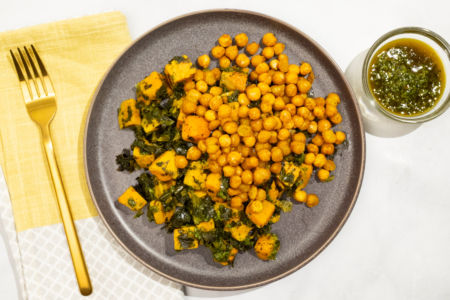Rich and briny without being overpowering, squid ink is an unexpected ingredient that adds a dramatic blue-black hue and a pop of ocean flavor to savory dishes.
Taste
For many, squid ink’s flavor embodies the taste of the sea. It’s briny and earthy with the richness of fatty fish and the umami undertones of seaweed. In contrast to the ink’s intense color, however, this nuanced flavor profile is actually quite mild.
Culinary Uses
Squid ink’s mild and briny taste is a great way to create depth in savory dishes without imparting too much “fishy” flavor. Use it to echo the ocean flavors in squid, shrimp, clams, or other kinds of shellfish. It also pairs well with any herbs, seasonings, and aromatics you would use with seafood. To finish, complement squid ink’s earthy richness with bright, acidic flavors such as cherry tomatoes or lemon.

Around the World
Squid ink is a common ingredient in islands and coastal nations, particularly Japan and the Mediterranean. It is also used commonly in parts of Asia.
Italy
Perhaps one of the most widely recognized recipes using squid ink, squid ink pasta is a common dish in the coastal regions of Italy. Squid ink can either be incorporated in the pasta itself, used as a sauce, or both. Squid ink risotto is another local favorite and is also enjoyed in Croatia and Montenegro.

Spain
Arròs negre is a Catalan and Valencian rice dish made with squid ink, squid, white rice, and a variety of seasonings and aromatics. It’s also eaten in Puerto Rico, Cuba, and the Philippines. Though sometimes referred to as squid ink paella or black paella, arròs negre isn’t traditionally considered a paella dish in Spain.
Japan
Squid ink spaghetti became a novel dish in Japan in the 1970s and eventually inspired locals to incorporate the ingredient in onigiri, ramen, and even hamburgers. It’s also used as a coloring agent, typically in noodles, gyoza wrappers, and bread buns. A particularly creative use of the ingredient is in squid ink ice cream, a dessert found in Tokyo and a few coastal regions.

Feature Image: Flickr user mmmyoso ( CC BY-NC-ND 2.0 )



